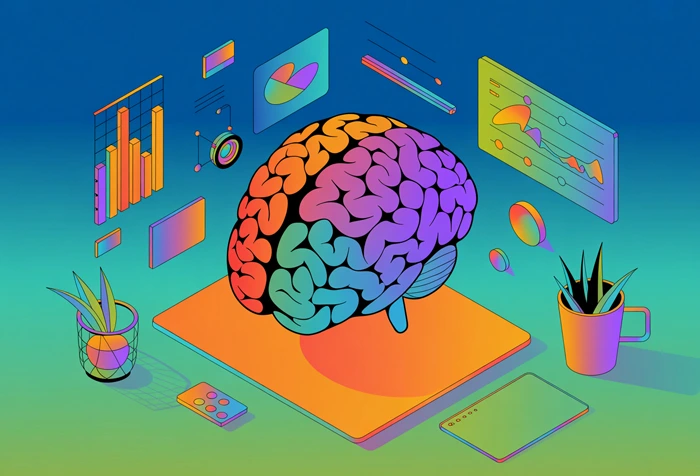
User experience (UX) is vital in modern web development, ensuring websites are user-friendly, accessible, and visually appealing. Neglecting UX can lead to significant issues, including high bounce rates and lost revenue. This article explores the risks of overlooking UX and delves into how developers and designers collaborate. We'll also discuss the differences between UX, UI, and web development, key UX/UI principles, and their relationship to web development.
Why Collaboration Between Developers and Designers is Crucial
Bridging the Gap Between Creativity and Functionality
Developers and UX/UI designers are essential for successful web projects, but their roles differ significantly. Designers focus on visual design, user flow, and intuitive interfaces, while developers bring these ideas to life through coding languages like HTML, CSS, and JavaScript. Effective collaboration ensures the seamless integration of aesthetics and functionality.
Collaborative Processes for Success
- Wireframing and Prototypes:
- Designers: Create wireframes and prototypes to visually represent the user journey.
- Developers: Analyze prototypes to identify technical feasibility and suggest improvements.
- Style Guides:
- Designers: Develop style guides to ensure consistency in fonts, colors, and visual elements.
- Developers: Use style guides to implement uniform design elements across the site.
- User Research and Feedback:
- Designers: Conduct surveys, user testing, and data analysis to understand user needs.
- Developers: Utilize feedback to enhance back-end and front-end functionality.
Tools That Foster Collaboration
- Adobe XD, Figma, and Sketch: For creating and sharing interactive prototypes.
- Version Control Systems: Tools like GitHub enable seamless collaboration between front-end and back-end developers and designers.
Differences Between UX, UI, and Web Development
Defining UX, UI, and Web Development
- UX Design: Focuses on user satisfaction and usability. Involves research, wireframing, and optimizing the user journey.
- UI Design: Focuses on aesthetics and interactive elements like buttons and sliders. Utilizes tools like Illustrator and Photoshop to design engaging interfaces.
- Web Development: Involves coding to create the structure and functionality of a website. Encompasses front-end development (client-side) and back-end development (server-side).
How These Disciplines Overlap
- Interactive Elements: While UI designers create buttons and menus, developers ensure they function smoothly.
- User Satisfaction: UX designers map out user flows that developers implement through coding.
- Web Design: Combines visual design (UI) and usability (UX) with technical development.
Key UX/UI Principles for Web Development
- Intuitive Interfaces
- Design with clear navigation menus.
- Prioritize simplicity to reduce cognitive load.
- Visual Design Consistency
- Use color schemes to evoke emotions.
- Create page layouts with a logical flow of information.
- Streamlined User Journeys
- Reduce the number of steps in forms.
- Use visual cues like progress bars.
- Accessibility
- Ensure websites are accessible to everyone, including users with disabilities.
- Use ARIA roles for screen readers and maintain contrast ratios for readability.
- Interactive Elements
- Add animations, hover effects, and dynamic feedback to enhance engagement.
- Highlight buttons when hovered over and use micro-interactions for subtle feedback.
Relationship Between UX/UI and Web Development
Enhancing User Satisfaction and Usability
Collaboration between UX/UI designers and web developers is essential for creating user-friendly products. Key areas of interconnection include:
- Front-End Web Development: Developers use frameworks like React or Angular to implement UI designs.
- Functionality and User Experience: Developers integrate features like search functionality or chatbots designed by UX teams.
- Research and Surveys in the Development Process: Research-driven UX ensures that the final product meets user expectations. Common practices include conducting surveys to identify pain points and utilizing analytics tools to track user behavior.
Roles and Responsibilities of UX/UI Designers in Web Development
- UX Designers:
- User Research: Conduct interviews and usability tests to gather insights and inform design decisions.
- Wireframes and Prototypes: Create layouts for the website's structure and flow.
- User Experience Flow: Design user journeys to enhance satisfaction.
- UI Designers:
- Designing Beautiful Things: Focus on visual appeal and branding elements.
- Interactive Website Components: Design engaging buttons, menus, and icons.
- Final Design Version: Refine designs for development handoff.
Collaborative Responsibilities
- Brainstorming: Generate creative ideas with developers.
- Feasibility Analysis: Ensure that designs align with technical constraints.
Dangers of Ignoring User Experience
- Poor User Engagement
- Websites that ignore UX often struggle to retain users. Without intuitive design and navigation, users quickly abandon the site.
- Decreased Conversion Rates
- Without clear CTAs or user-friendly design, conversion rates plummet. Simplifying user flows can significantly improve results.
- SEO Impacts
- Search engines prioritize user-friendly websites. Slow load times, non-responsive design, and poor accessibility hurt rankings.
- Damaged Reputation
- A website with poor UX reflects badly on your brand. Dissatisfied users may share negative feedback online, impacting your credibility.
Solutions to Common UX Challenges
- Slow Loading Times: Optimize images and scripts to enhance speed. Use CDNs to deliver content faster.
- Non-Responsive Design: Implement responsive frameworks like Bootstrap. Test on multiple devices to ensure compatibility.
- Poor Accessibility: Add alt text for images. Ensure color contrast meets WCAG standards.
Conclusion
Ignoring user experience in web development is a mistake that businesses can’t afford. The consequences are significant, from reduced user engagement to SEO challenges. By fostering collaboration between developers and designers, understanding the distinctions between UX, UI, and web development, and adhering to key principles, you can create a user-friendly, high-performing website.
Prioritizing UX isn't just an option—it's a necessity for modern web development success.



